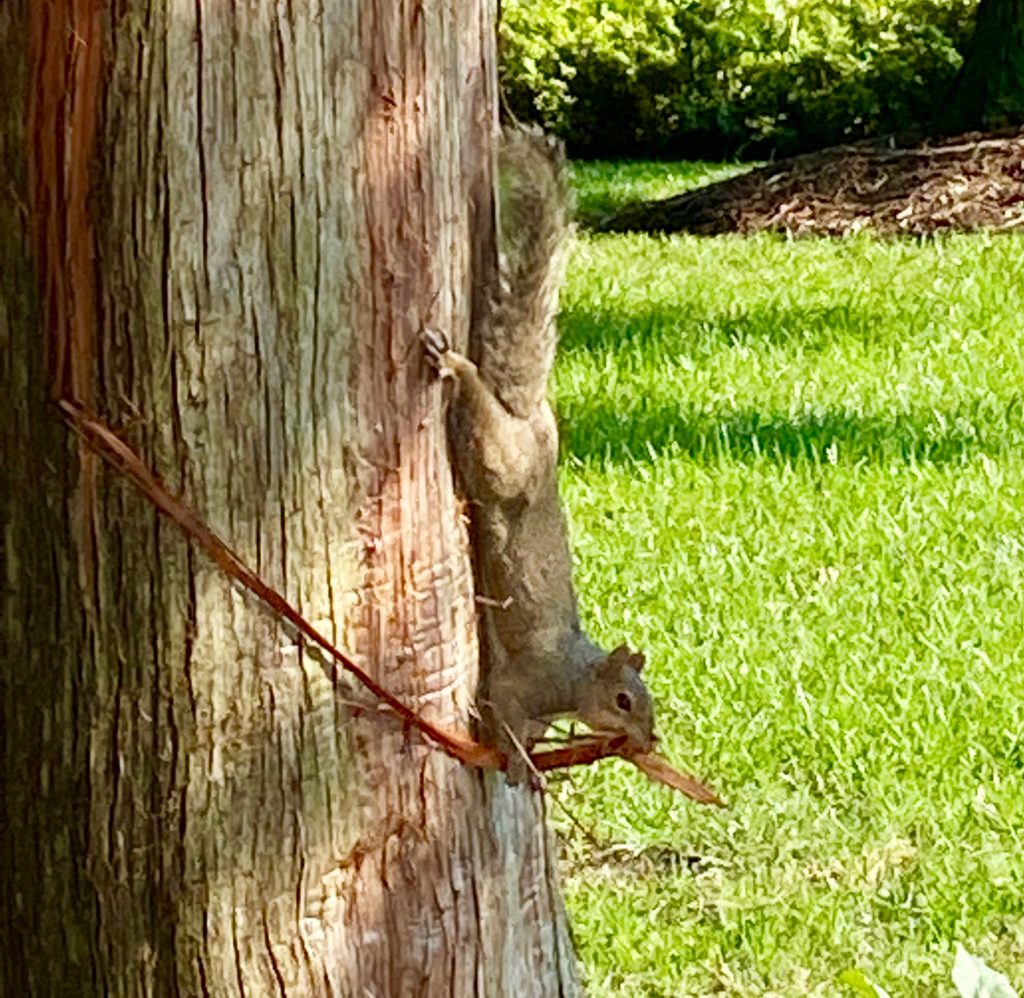Mary Reid Barrow

This little squirrel busily stripping bark from a cypress tree at the North End caught the eye of Terri Gorman, LRNow’s Pearl Home Coordinator.
Odds are Terri’s camera captured a mama squirrel gathering the silky, soft cypress bark to line a nearby nest.
In the squirrel world, it’s baby time again!
Mama squirrels are busy–virtually all the time. The stork arrives both in late January or February and again in late summer.
So squirrels are in constant nesting mode. They work much of the year to build, renovate or spruce up nests of leaves, grasses, twigs and other materials that they install in a tree cavity or in the crook of a tree.
A few weeks ago, I noticed small leafy twigs littering the ground under my live oak and I knew mama squirrel was nest building again. For every twig she carries off, it seems, she drops another on the ground.
Squirrels prefer tree cavities because they are safer but a big nest in a tree works also. Tree nests are often called “dreys” to distinguish them from cavity nests. Males and females also put nests to good use as warm places to curl up in winter.
Ever alert, mama squirrels usually have two homes prepped for their babies. One is like an insurance nest, in case something happens to their nest of choice.
Once I watched a mama painstakingly carry her babes all rolled up in a ball, one by one, down from a nest in one tree in my yard and up a tree to another nest. The massive moveout occurred when she sensed that nearby workmen were threatening her safety.
Once you realize that squirrels generally have two litters of babes a year and are such careful moms, it’s not hard to figure out where all the neighborhood squirrels are coming from.
It’s no miracle. The stork isn’t dropping baby squirrel bundles of joy across the land. Squirrels just have some very busy mamas and papas.
If you think about it, a female squirrel can live for around six years and generally have two to three babies per litter. So, she could add 20 or so new little ones to the population in our yards over a life time.
And that’s just one of the squirrels in the neighborhood! That’s why all those darn squirrels get blamed for lots of problems, but it’s really not because squirrels are nuisances. It’s because they are so good at their job.
They create great nurseries and they are fiercely protective which makes them some of the best moms in nature. It’s time to give mama squirrels a break.
How about a round of acorns to all the August moms out there?
Do you have a favorite tree, a secret tree grove or neighborhood climbing tree that you love? Let me know your stories about trees, the critters who live in them and the insects that dine on them. Send an email to maryreid@lrnow.org